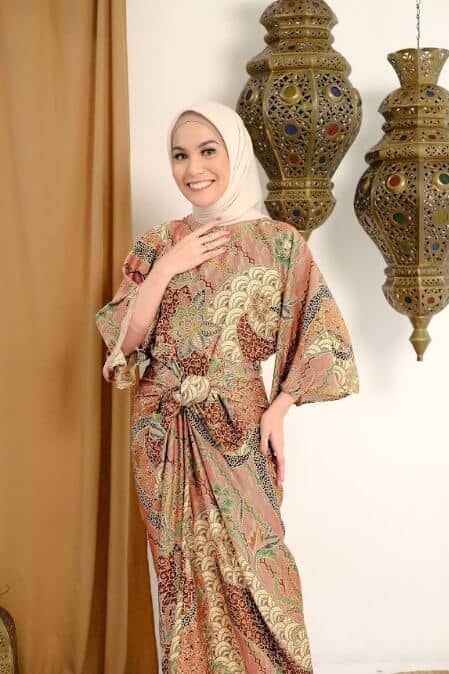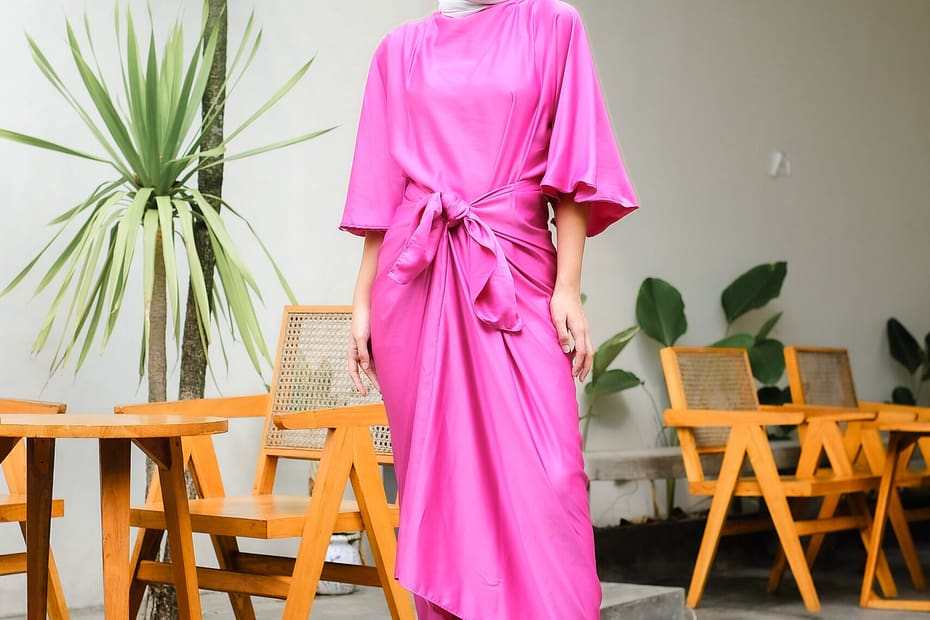Table of Contents
Are you a Muslim woman who wants to stay fashionable while still maintaining your modesty? Look no further! In this article, we will explore the world of Muslim clothes for women and how you can embrace both fashion and modesty. From traditional abayas to modern hijabs, we will guide you through the latest trends, styling tips, and where to find the best deals. Whether you’re attending a special occasion or simply want to update your wardrobe, our comprehensive guide will help you navigate the world of Muslim fashion with confidence. Get ready to express your personal style while staying true to your beliefs – let’s dive in!
The Importance of Muslim Clothes for Women
Preserving Modesty
Muslim clothes for women play a significant role in preserving modesty, which is highly valued within the Islamic faith. Modesty is not only an outward expression of humility and self-respect, but it also reflects one’s commitment to upholding religious values. By choosing to wear modest clothing, Muslim women can protect their bodies from unwanted attention and maintain their dignity. The garments typically cover the body in loose-fitting and non-revealing styles, including long sleeves, high necklines, and ankle-length skirts or pants. This focus on modesty helps Muslim women to feel comfortable, secure, and respected in their daily lives.
Expressing Cultural Identity
Muslim clothes for women also serve as a means of expressing cultural identity. With a wide variety of styles, colors, and patterns available, Muslim women can choose garments that reflect their cultural heritage while adhering to Islamic principles of modesty. These clothes often incorporate traditional designs and artistry from various regions, showcasing the rich diversity within the Muslim community. By wearing culturally inspired clothing, Muslim women can proudly display their heritage and foster a sense of belonging within their community.

To view our collections, click here.
Honoring Religious Beliefs
Muslim clothes for women hold deep religious significance as they symbolize the adherence to Islamic teachings and beliefs. The Quran, the holy book of Islam, encourages modesty in dress for both men and women. By wearing clothing that covers the body appropriately, Muslim women demonstrate their devotion to their faith and their commitment to following the teachings of Islam. This act of dressing modestly is seen as a form of worship and a means to seek the pleasure of Allah, the Islamic deity. By honoring religious beliefs through their attire, Muslim women embrace a spiritual connection and demonstrate their commitment to their faith.
In conclusion, Muslim clothes for women serve a multifaceted purpose. They uphold the values of modesty, allowing women to feel comfortable and respected. They also provide a platform for expressing cultural identity, showcasing the diversity within the Muslim community. Moreover, these garments honor religious beliefs, serving as a visual representation of one’s devotion to the Islamic faith. The importance of Muslim clothes for women extends beyond mere fashion; it is a reflection of faith, culture, and personal values.
Traditional Muslim Clothing Styles
Hijab
The hijab is a traditional Muslim clothing style worn by women to cover their hair and neck. It is a symbol of modesty and is widely embraced by Muslim women around the world. The hijab comes in various styles and designs, allowing women to express their personal fashion choices while adhering to religious guidelines. It is typically made from lightweight and breathable fabrics, ensuring comfort and versatility in different weather conditions.
Abaya
The abaya is a long, loose-fitting cloak worn by Muslim women as an outer garment. It is commonly black in color and covers the entire body, except for the hands and face. The abaya is designed to provide modesty and is often embellished with intricate embroidery or embellishments, adding a touch of elegance to the overall look. It is a versatile piece of clothing that can be worn for various occasions, from casual outings to formal events.
Niqaab
The niqaab is a face-covering veil worn by some Muslim women as an additional layer of modesty. It covers the entire face, leaving only the eyes visible. The niqaab is a personal choice for women who desire a higher level of privacy and modesty. It is usually made from lightweight and breathable fabrics, allowing for comfortable wear. Although not as commonly worn as the hijab or abaya, the niqaab holds cultural and religious significance for those who choose to wear it.
In conclusion, traditional Muslim clothing styles such as the hijab, abaya, and niqaab allow women to embrace fashion while maintaining modesty. These clothing choices are not only a reflection of religious beliefs but also provide an opportunity for self-expression and individual style. Whether it’s the hijab’s diverse designs, the abaya’s elegant silhouette, or the niqaab’s added privacy, Muslim women have a range of options to showcase their fashion choices within the boundaries of their faith.
Fashion Trends in Muslim Clothing
Contemporary Abaya Designs
Abayas, traditional Muslim garments worn by women, have evolved over the years to incorporate contemporary designs and styles. Gone are the days when abayas were solely limited to plain black robes. Today, women have a wide range of options to choose from, with various colors, patterns, and embellishments available in the market.
Contemporary abaya designs often feature intricate embroidery, delicate lacework, and modern cuts that enhance the overall look and feel of the garment. These designs strike a perfect balance between tradition and style, allowing women to embrace fashion while adhering to their modesty.
Modest Fashion Influencers
With the rise of social media and the increasing demand for modest fashion, several Muslim influencers have emerged as trendsetters in the industry. These modest fashion influencers use their platforms to showcase stylish outfits that are both fashionable and modest, inspiring women around the world.
Through their creative styling techniques, these influencers demonstrate how Muslim women can embrace fashion while adhering to their religious and cultural values. They showcase a variety of clothing options, including abayas, hijabs, and modest dresses, proving that modesty and fashion can go hand in hand.
Mixing Western and Islamic Fashion
In recent years, there has been a growing trend of combining Western and Islamic fashion elements to create unique and stylish outfits. This fusion allows Muslim women to incorporate trendy Western pieces into their traditional Islamic attire, resulting in a contemporary and fashionable look.
Mixing Western and Islamic fashion involves pairing traditional garments like abayas or hijabs with modern accessories, such as statement belts, oversized sunglasses, or stylish handbags. This combination not only adds a touch of personal style but also showcases the versatility and adaptability of Muslim clothing.
In conclusion, the fashion trends in Muslim clothing have evolved significantly, offering women a wide range of options to embrace fashion while maintaining their modesty. Contemporary abaya designs, the influence of modest fashion influencers, and the fusion of Western and Islamic fashion all contribute to the growing acceptance and popularity of stylish Muslim clothing.

Tips for Choosing Muslim Clothes
Consider the Occasion
When choosing Muslim clothes for women, it is important to consider the occasion for which you will be wearing them. Different occasions call for different styles and levels of formality. For formal events such as weddings or religious ceremonies, you may opt for more elaborate and intricately designed outfits. On the other hand, for casual outings or everyday wear, you may prefer simpler and more comfortable garments. By considering the occasion, you can ensure that you are dressed appropriately while still embracing fashion and modesty.
Selecting the Right Fabrics
The choice of fabrics plays a significant role in Muslim clothing for women. It is essential to select fabrics that are not only comfortable but also offer the desired level of modesty. Natural fabrics such as cotton, linen, or silk blends are often preferred due to their breathability and ability to drape gracefully. These fabrics are not only comfortable to wear but also offer a stylish and elegant look. Additionally, it is important to choose fabrics that are not see-through or clingy, as they may compromise the desired level of modesty.
Finding the Right Fit
Finding the right fit is crucial when it comes to Muslim clothes for women. Ill-fitting garments can be uncomfortable and may not provide the desired modesty. It is essential to consider the body shape and measurements when selecting clothing items. Loose-fitting dresses, abayas, or tunics are popular choices as they offer both comfort and modesty. Additionally, paying attention to the length of the garments, ensuring they cover the required areas, is important. Finding the right fit will not only ensure your comfort but also allow you to embrace fashion while maintaining modesty.
By following these tips for choosing Muslim clothes, you can confidently embrace fashion and modesty. Considering the occasion, selecting the right fabrics, and finding the right fit will help you create stylish and comfortable outfits that reflect your personal style and values.
Breaking Stereotypes with Muslim Fashion
Muslim fashion has gained significant attention in recent years, and rightfully so. With its unique blend of fashion and modesty, Muslim clothes for women have been breaking stereotypes and challenging preconceived notions. This emerging trend has not only promoted diversity but also empowered women while combating Islamophobia.
Promoting Diversity
One of the most remarkable aspects of Muslim fashion is its ability to promote diversity. It embraces various cultural influences, allowing women from different backgrounds to express their individuality while adhering to their religious beliefs. Muslim fashion designers have skillfully incorporated traditional elements, such as intricate patterns, vibrant colors, and draped silhouettes, into contemporary fashion. This fusion of cultures not only celebrates diversity but also encourages inclusivity within the fashion industry.
Empowering Women
Muslim fashion not only emphasizes modesty but also empowers women. Contrary to popular belief, modesty does not equate to suppression. In fact, Muslim women who choose to wear modest clothing feel empowered by their choice. They are able to express themselves through fashion while maintaining their values and faith. Muslim fashion allows women to showcase their personal style and creativity, proving that fashion and modesty can coexist in a harmonious and empowering manner.
Combating Islamophobia
In a world where Islamophobia continues to prevail, Muslim fashion plays a crucial role in combating stereotypes and misconceptions. By showcasing the beauty and diversity of Muslim clothing, it challenges the negative portrayal of Islam in the media. Fashion shows and events dedicated to Muslim fashion provide a platform for dialogue and understanding, allowing people to appreciate the rich cultural heritage behind these garments. Through fashion, Muslim women can reclaim their narrative, breaking down barriers and fostering a more inclusive society.
In conclusion, Muslim fashion has emerged as a powerful force that breaks stereotypes, promotes diversity, empowers women, and combats Islamophobia. It has become a symbol of pride, allowing Muslim women to embrace both fashion and modesty. By celebrating the fusion of cultures and challenging societal norms, Muslim fashion has opened doors to a more inclusive and understanding society.
In conclusion, Muslim clothes for women offer a beautiful blend of fashion and modesty, allowing women to express their personal style while adhering to their religious beliefs. The diverse range of options available ensures that every woman can find clothing that suits her individual preferences, whether it be traditional garments like hijabs and abayas or modern interpretations that incorporate current trends. By embracing fashion and modesty in their clothing choices, Muslim women are able to showcase their unique identities and contribute to the vibrant and inclusive fashion landscape.
